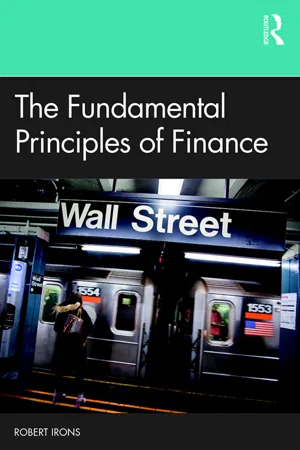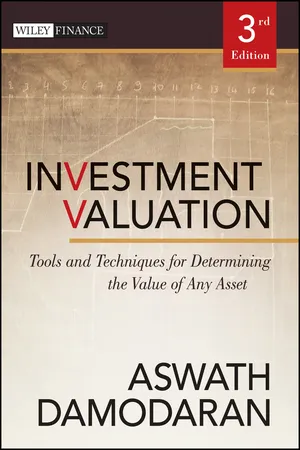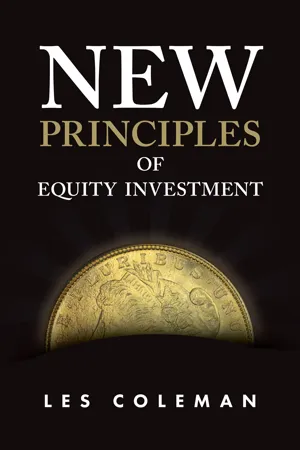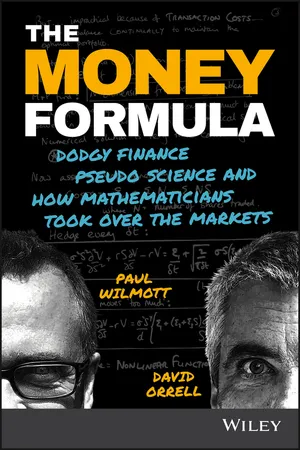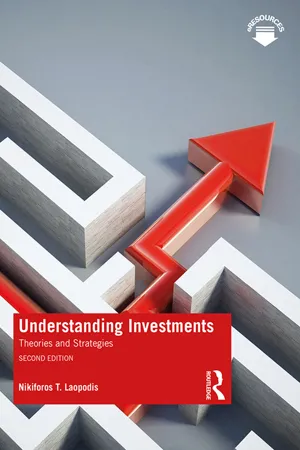Economics
Risk-Return Trade Off
The risk-return trade-off refers to the principle that higher potential returns are typically associated with higher levels of risk. Investors must weigh the potential for greater profits against the possibility of incurring losses when making investment decisions. This concept is fundamental to understanding the relationship between risk and reward in financial markets.
Written by Perlego with AI-assistance
Related key terms
Related key terms
1 of 4
Related key terms
1 of 3
5 Key excerpts on "Risk-Return Trade Off"
- eBook - ePub
- Robert Irons(Author)
- 2019(Publication Date)
- Routledge(Publisher)
3 Risk and ReturnBusinesses constantly face risks, some recurring (like the risk of a competitor designing a newer, better product), others new and different (like the risk of an economic recession) and all seemingly never-ending. Risks come in many different forms and different levels of severity. Part of being a good manager is being able to understand the nature of the risks the firm faces and determine the return necessary to make the risks worth bearing.The last sentence above implies a relationship between risk and return, and that relationship is important for you to understand. That relationship is stated clearly in our second fundamental principle (FP2), which identifies the positive nature of the relationship between risk and return. This relationship is so important that it is usually a mistake to discuss an investment’s return without also discussing its risk. In this chapter, we will discuss the different types of risk firms (and investors) face, how these risks are measured and how they compare to returns. We will also discuss how to calculate returns over a holding period, as well as how to calculate mean annual returns over an extended period of time.The Fundamental Principles in Action
FP2 states that there is a direct (or positive) relationship between perceived risk and required return. This principle is clearly seen when calculating expected returns using the Security Market Line. PR3 examines the inverse relationship between value and the risk, while PR1 describes the inverse relationship between value and the discount rate. These two precepts are linked by the direct relationship between risk and return, since the return to shareholders is used as the discount rate for valuing the firm’s common shares. - eBook - ePub
Investment Valuation
Tools and Techniques for Determining the Value of Any Asset
- Aswath Damodaran(Author)
- 2012(Publication Date)
- Wiley(Publisher)
The final part of this chapter considers default risk and how it is measured by ratings agencies. By the end of the chapter, we should have a way of estimating the equity risk and default risk for any firm.WHAT IS RISK?Risk, for most of us, refers to the likelihood that in life’s games of chance we will receive an outcome that we will not like. For instance, the risk of driving a car too fast is getting a speeding ticket or, worse still, getting into an accident. Merriam-Webster’s Collegiate Dictionary , in fact, defines the verb to risk as “to expose to hazard or danger.” Thus risk is perceived almost entirely in negative terms.In finance, our definition of risk is both different and broader. Risk, as we see it, refers to the likelihood that we will receive a return on an investment that is different from the return we expect to make. Thus, risk includes not only the bad outcomes (returns that are lower than expected), but also good outcomes (returns that are higher than expected). In fact, we can refer to the former as downside risk and the latter as upside risk, but we consider both when measuring risk. In fact, the spirit of our definition of risk in finance is captured best by the Chinese symbols for risk:Loosely defined, the first symbol is the symbol for “danger,” while the second is the symbol for “opportunity,” making risk a mix of danger and opportunity. It illustrates very clearly the trade-off that every investor and business has to make—between the higher rewards that come with the opportunity and the higher risk that has to be borne as a consequence of the danger.Much of this chapter can be viewed as an attempt to come up with a model that best measures the danger in any investment, and then attempts to convert this into the opportunity that we would need to compensate for the danger. In finance terms, we term the danger to be “risk” and the opportunity to be “expected return.”What makes the measurement of risk and expected return so challenging is that it can vary depending on whose perspective we adopt. When analyzing the risk of a firm, for instance, we can measure it from the viewpoint of the firm’s managers. Alternatively, we can argue that the firm’s equity is owned by its stockholders, and that it is their perspective on risk that should matter. A firm’s stockholders, many of whom hold the stock as one investment in a larger portfolio, might perceive the risk in the firm very differently from the firm’s managers, who might have the bulk of their capital, human and financial, invested in the firm. - eBook - ePub
- Les Coleman(Author)
- 2019(Publication Date)
- Emerald Publishing Limited(Publisher)
Looking ahead, we will combine the dictionary definition of risk with Knightian uncertainty. Thus the risk of equity investment is a downside measure equal to the hard-to-estimate possibility of return below the investor’s opportunity cost or benchmark. It comes from two sources. One is knowledge risk, or the possibility that new information will emerge to alter the investment decision (see Coleman & Casselman, 2016). The other is uncertainty in outcome, given that return from equity investment is the manifestation of numerous time-varying and non-quantifiable variables.The Relationship between Return and Risk
A central tenet of contemporary finance is the existence of a positive, linear relationship between return and risk. According to Modigliani and Modigliani (1997, p. 45), for instance: ’it is well known that investors can increase expected returns simply by accepting a greater level of risk’. In their introduction to a study on the topic, Ghysels, Santa-Clara, and Valkanov (2005) concurred: ’this risk–return tradeoff is so fundamental in financial economics that it could well be described as the "first fundamental law of finance"’.Unfortunately the positive return–risk nexus is an influential misconception that does not stand up to scrutiny. Ex post studies variously report that the relationship is significantly positive, significantly negative and insignificant (see a summary of disparate results in Scruggs, 1998). When risk and return are considered ex ante as their expected values, neither can be directly observed nor even has a reasonable proxy, so any link between them cannot be tested. There are practical reasons to doubt a positive return–risk relationship because it is unable to accommodate securities that have a negative expected return such as firms in bankruptcy; and a linear return–risk trade-off has the challenging corollary that each investment with a given return must have the same risk.In fact, evidence is clear that the return–risk relationship is probably negative rather than positive. For instance, Fama and French (1992) identified a negative relationship between risk and return at the equity market level. An analogous finding comes from observation that idiosyncratic risk has an inverse relationship with price-to-book ratio (Amit & Wernerfelt, 1990): a high price-to-book ratio indicates superior management and better investment prospects (Zhang, 2005), which is associated with lower risk. A negative relationship is also found at the firm level where the Bowman (1980) Paradox arose from finding that more profitable companies have lower risk as measured by variability in profits. This inverse return–risk relationship has been widely confirmed in subsequent studies which find consistent evidence that safe, incident-free operations are the most profitable. Typical examples are given by US nuclear power plants where higher reliability is associated with higher earnings by plant operators (Osborn & Jackson, 1988); and also by airline bond ratings which are related to operational safety (Noronha & Singal, 2004) and indicate that low-risk operations accompany low risk of default. Further confirmation came out of my own study of large US firms that are fined for environmental breaches, unsafe workplaces or fraudulent accounting standards and announce product recalls (Coleman, 2010): these indications of inherent operating risk and uncertainty were followed by significant declines in sales margin and shareholder return. - eBook - ePub
The Money Formula
Dodgy Finance, Pseudo Science, and How Mathematicians Took Over the Markets
- Paul Wilmott, David Orrell(Authors)
- 2017(Publication Date)
- Wiley(Publisher)
Human beings are very poor at estimating probabilities. We tend to be optimistic about our investments, and even the most pessimistic of us is usually pessimistic about the wrong things. So shocks often seem to come out of nowhere. In contrast, investors put their money at risk because they want to earn a reward. And these two aspects – risk and reward – are somehow related, but not in an obvious way. Putting all your cash under the mattress is probably safe, unless your house burns down.Financial risk management – the craft of balancing risk with reward – is a subject that has had a relatively recent quantitative makeover. One of its great advantages is that it takes the emotions out of estimating risks, and perhaps prepares you when it hits the fan. But that advantage is only as good as the quant methods. If the methods are no good, then risk management is at best a trick for temporarily soothing the psyche. To understand whether it is a useful tool for navigating the choppy waters of finance, we need to step back into asset management history and look at the development of investment techniques.If we go back to before the 1950s, an optimal investment was considered to be the one that had the best perceived prospects. Of course, people had an innate sense of risk, at a gut level. More cautious investors could mitigate danger by diversifying, in the same way that Antonio in Shakespeare's The Merchant of Venice split his shipments between a number of boats (or “bottoms”), so that if one sunk all his goods were not lost. But risk wasn't something that you could easily quantify, unlike profit which you could. So people usually went for the profit. This approach did have one advantage, that of simplicity. In deciding which investment to concentrate on, you only needed to analyze each one in isolation.There are several ways in which to analyze stocks, the three most important being fundamental analysis, technical analysis, and what one might call quantitative analysis. We'll look first at each in turn, and then describe the revolution in the 1950s that changed the face of investing. - eBook - ePub
Understanding Investments
Theories and Strategies
- Nikiforos T. Laopodis(Author)
- 2020(Publication Date)
- Routledge(Publisher)
Chapter 3Fundamentals of risk and returnChapter contents
3.1 Introduction 3.2 Measuring return 3.3 Measuring risk 3.4 Chapter summary Key concepts Questions and problems Appendix: A brief review of the time value of moneyChapter objectives
After studying this chapter, you should be able to- Know the various ways to measure the return of an asset and the differences among them
- Compare among various interest rates (or yields) in the marketplace
- Understand the various sources of risk and how to measure the risk of an asset
- Know what required return is and its relationship to an investor’s risk aversion
- Learn how to make economic (investment) decisions under risky environments
- See the connection between utility and risk aversion
3.1 Introduction
The two basic elements of investing are risk and (expected) return. The objective of the investor is to maximize his expected return, subject to constraints including his risk and tolerance (or degree of risk aversion). Alternatively, the investor can minimize his risk exposure, without sacrificing a certain expected rate of return (the target rate of return). Therefore return and risk are crucial metrics and the investor must know how to calculate them and interpret them. There are several ways to measure return and all of them will be presented in the next section. The risk of the individual securities the investor holds in his portfolio, as well as his overall (or portfolio) risk, is important for the investor; he must also know how to compute and interpret it. This will be covered in the third section.Recall that risk and expected return go together in the sense that you cannot concentrate on return and ignore risk. That said, comments like “I want to make as much money as possible” or “I expect to earn that much from investing in a security” without mentioning the level of risk these investments carry do not make sense or are worthless.
Index pages curate the most relevant extracts from our library of academic textbooks. They’ve been created using an in-house natural language model (NLM), each adding context and meaning to key research topics.
Explore more topic indexes
Explore more topic indexes
1 of 6
Explore more topic indexes
1 of 4
